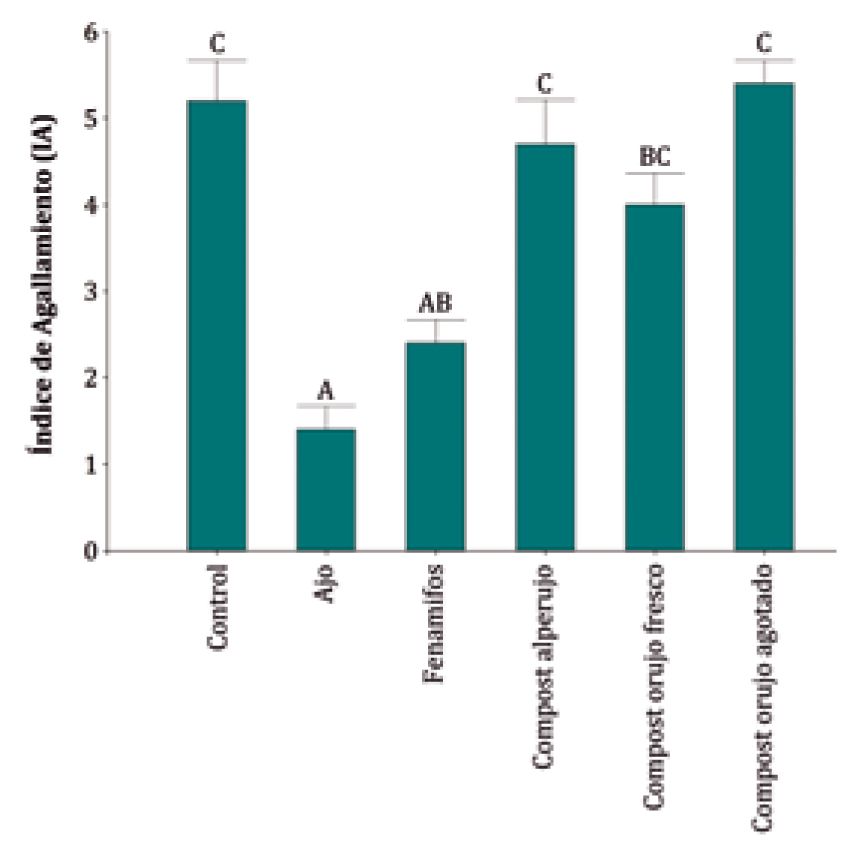Nematicidal effects of extracts of garlic, grape pomace and olive mill waste, on Meloidogyne incognita, on grapevine cv Chardonnay
Keywords:
crop protection, grapevine, Meloidogyne incognita, vegetal extracts, nematicideAbstract
Meloidogyne incognita, significantly affects the grapevines in Argentina. Currently there are few tools available to control this pest. The objective of this work was to compare the nematicidal effects of aqueous extracts of garlic bulbils, immature compost of olive mill waste, immature compost of fresh grape pomace and immature compost of spent grape pomace on the galling index (IA), the rate of reproduction of the eggs and juveniles J2 (IR) and the final population of M. incognita females (H) in grapevines, cv Chardonnay. The experiments were performed with potted plants of grapevines cv Chardonnay, in greenhouse conditions. The only treatment that showed statistically differences compared to the control, was the extract of garlic bulblets; while the extracts of immature compost of olive mill waste, immature compost of fresh grape pomace and immature compost of spent grape pomace, did not affect the evaluated parameters. The extract of garlic bulblets decreased by 73% the IA, 80% the IR and 94% H, therefore the development from this material of an organic nematicide with low environmental impact could be expected.Downloads
Download data is not yet available.

Downloads
Published
30-06-2016
How to Cite
Martinotti, M. D., Castellanos, S. J., González, R., Camargo, A., & Fanzone, M. (2016). Nematicidal effects of extracts of garlic, grape pomace and olive mill waste, on Meloidogyne incognita, on grapevine cv Chardonnay. evista e a acultad e iencias grarias NCuyo, 48(1), 211–224. etrieved from https://revistas.uncu.edu.ar/ojs3/index.php/RFCA/article/view/3240
Issue
Section
Plant protection
License
Aquellos autores/as que tengan publicaciones con esta revista, aceptan las Políticas Editoriales.










.jpg)




